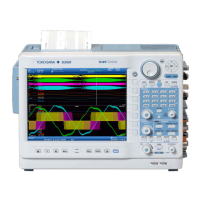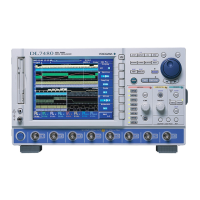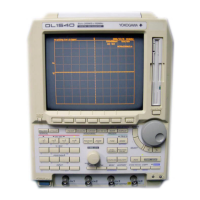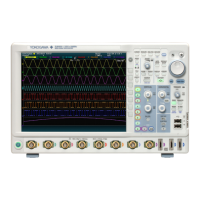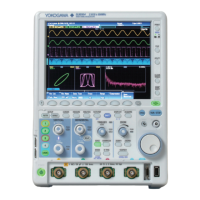2-19
IM DLM6054-01EN
Features
2
1
4
5
6
7
8
9
10
11
12
13
14
15
16
17
18
Index
App
Chapter 11 for the procedures
When signals are being measured, the signal stored in the acquisition memory as a result of a trigger
occurrence is displayed as a waveform on the DL6000/DLM6000 screen and can be viewed. When
signal acquisition is being triggered in succession and an abnormal waveform appears, it is impossible
to stop measurement before a new waveform appears on the screen. Normally, it would be impossible
to view the abnormal waveform. However, with the history feature, you can view the past signal data
(history waveforms including the current displayed waveform) stored in the acquisition memory when
signal acquisition is stopped.
You can select different formats for viewing the history waveforms. You can view:
• A
single waveform.
• All waveforms, with a color or intensity gradation applied to them.
• All waveforms with the selected waveform highlighted and no gradation.
• The simple arithmetic mean of all waveforms.
You can also automatically replay waveforms from newest to oldest or from oldest to newest.
The number N of waveforms that can be acquired and held as history waveforms varies from 1 to 2000
depending on the record length setting. If N is exceeded, the oldest history waveform is cleared. The
waveform currently displayed on the screen (newest waveform) is counted as the first waveform. The
oldest waveform that you can display is the one whose number is N-1. The following is an example
when N = 1000.
Waveform data for the last 1000 triggers is stored.
Waveform number 0
Waveform number –25
Display of the current
waveform (number 0)
Display of past waveforms
(selected from numbers 0 to –999)
2.5 Acquisition Conditions

